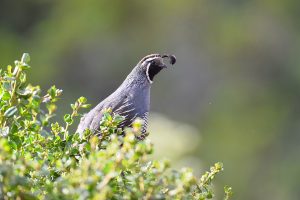Campylobacter jejuni, a leading cause of gastroenteritis worldwide, has been frequently isolated from recreational rivers and streams in New Zealand, yet the public health significance of this is unknown.
 This study uses molecular tools to improve our understanding of the epidemiology and sources of Campylobacter in recreational waterways, with a view to preventing human infection.
This study uses molecular tools to improve our understanding of the epidemiology and sources of Campylobacter in recreational waterways, with a view to preventing human infection.
Epidemiological and microbiological data were collected between 2005 and 2009 from six high-use recreational waterways in the Manawatu-Wanganui region of the North Island. Campylobacter spp. and C. jejuni were isolated from 33.2% and 20.4% of 509 samples, respectively. Isolation of Campylobacter was observed in both low and high river flows. After adjusting for the confounding effects of river flow, there was a significantly higher likelihood of isolating Campylobacter in the winter month of June compared to January. A high diversity of C. jejuni multilocus sequence types was seen, with the most commonly isolated being the water rail-associated ST-2381 (19/91 isolates [20.9%]), ST-1225 (8/91 isolates [8.8%]), and ST-45 (6/91 isolates [6.6%]). The ST-2381 was found in all rivers, while the most commonly isolated ST from human cases in New Zealand, the poultry-associated strain ST-474, was isolated only in one river.
Although the majority of Campylobacter sequence types identified in river water were strains associated with wild birds that are rarely associated with human disease, poultry and ruminant-associated Campylobacter strains that are found in human infection were also identified and could present a public health risk.
IMPORTANCE In 2016, there was a large-scale waterborne outbreak of campylobacteriosis in New Zealand, which was estimated to have affected over 5,000 people. This highlighted the need for a greater understanding of the sources of contamination of both surface and groundwater and risks associated with exposure to both drinking and recreational water. This study reports the prevalence and population structure of Campylobacter jejuni in six recreational waters of the Manawatu-Wanganui region of New Zealand and models the relationship between Campylobacter spp. and ruminant-associated Campylobacter and the parameters “sites,” “months,” and “river flow.” Here, we demonstrate that both low and high river flows, month of the year, and recreational sites could influence the Campylobacter isolation from recreational waters. The presence of genotypes associated with human infection allowed us to describe potential risks associated with recreational waters.
Campylobacter jejuni strains associated with wild birds and those causing human disease in six high-use recreational waterways in New Zealand, 2019
Applied and Environmental Microbiology
Rima D. Shrestha, Anne C. Midwinter, Jonathan C. Marshall, Julie M. Collins-Emerson, Eve J. Pleydell, Nigel P. French
DOI: 10.1128/AEM.01228-19
https://aem.asm.org/content/85/24/e01228-19.abstract?etoc









 (handing out burger buns) and everyone else used a utensil such as a spoon, knife or tongs to serve food along with gloves. During the slower parts of the afternoon, I would take breaks to chat with people and often drift over to see the birds, Monty and Apple (right). They are very charming little creatures, so I took full advantage of holding them and kissing them (glove-free).
(handing out burger buns) and everyone else used a utensil such as a spoon, knife or tongs to serve food along with gloves. During the slower parts of the afternoon, I would take breaks to chat with people and often drift over to see the birds, Monty and Apple (right). They are very charming little creatures, so I took full advantage of holding them and kissing them (glove-free). 
 The
The